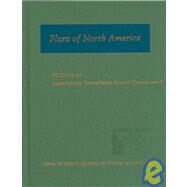Flora of North America Volume 24: Magnoliophyta: Commelinidae (in part): Poaceae, part 1:North of Mexico
, by Flora of North America Editorial Committee; Barkworth, Mary E.; Capels, Kathleen M.; Long, Sandy; Anderton, Laurel K.- ISBN: 9780195310719 | 0195310713
- Cover: Hardcover
- Copyright: 3/5/2007
Flora of North America brings together for the first time ever in a concise and easy to understand format information on all of the plants growing spontaneously in North America north of Mexico. Volume 24 of Flora North America is one of two volumes on grasses to be published in this series (Volume 25, though it follows sequentially, was published in 2003). Together they will provide a comprehensive, authoritative, illustrated account of this important group of plants. Most of the species treated are either native to North America north of Mexico or are introduced species that are now established in the region, but there are many that do not fit into these categories. Among the additional species are several that the USDA has identified as major weed threats; and others that are known only as cultivated plants, some being cultivated for their ornamental value, others as sources for human food or animal forage. For instance, volume 24 includes such ecologically important genera as Elymus (wheatgrasses), Poa (bluegrasses), and Festuca (fescues), economically important species such as Triticum (wheat), Hordeum (barley), Oryza (rice), and Zizania (wild rice), several ornamental species, including some bamboos, and noxious weeds such as Elymus repens (quackgrass), and Bromus tectorum (cheatgrass). The volume includes identification keys, descriptions, line drawings, and ecological characteristics for each of the species; distribution maps for the native and established species; and a list of commonly encountered synonyms for the accepted names. The treatments, each of which has been extensively reviewed, are based on a combination of original observations and critical review of the literature.







